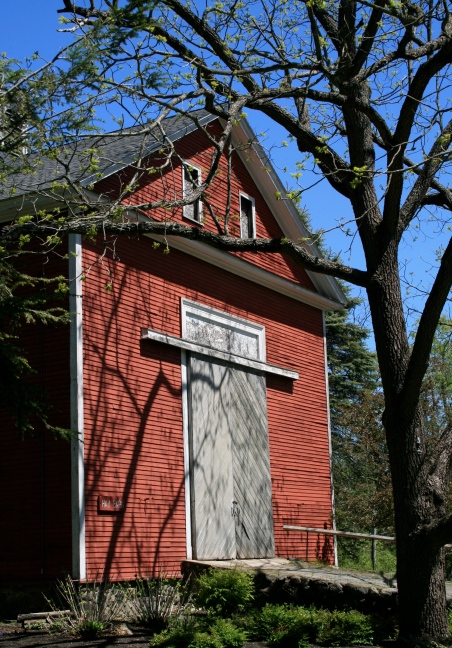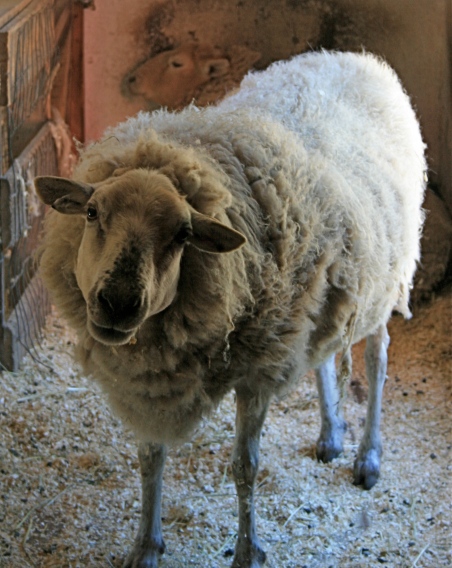Throughout the summer I visited a series of historic gardens located north of Boston in a somewhat random and entirely unfocused manner. Not having a clear goal my visits were serendipitous; a beautiful day, a spontaneous outing, a garden (or landscape) that was either very familiar or totally new. As Anthony Bourdain might say, no reservations and for me no expectations…. off I went.
Many of the gardens share common features (and strong female protagonists) with intriguing individual histories that illuminate the important social role horticulture and garden design played within American culture. Often they began as “gentlemen’s farms” and evolved to combine formal and informal features and landscapes. As an oeuvre the gardens provide glimpses into the perspectives and aspirations of their creators. They exist today in various stages of restoration. All are open to the public free of charge.
One of my favorites is Glen Magna Farms. While relatively small in size, Glen Magna’s gardens have been preserved as a collection of spaces that relate to each other physically and visually, yet retain the integrity of their individual historic periods, allowing for an opportunity to experience the evolution of American garden making in the nineteenth and twentieth century. For additional information about the history of New England Gardens watch “Lost Gardens of New England,” a multimedia presentation narrated by Laura Carlo on Historic New England’s website: http://www.historicnewengland.org/collections-archives-exhibitions/online-exhibitions/lost-gardens-of-new-england/lost_gardens.htm
Containing both formal and informal elements as well as specimen plantings, the gardens are ornamented with significant architectural elements and were described in 1908 as exhibiting “fresh matters of interest, fresh notes of beauty, a new arrangement of flowers and shrubs, an agreeable grouping of paths, a careful treatment of grass and lawn, a fine utilization of structural ornaments, old and new, that are naturally and rightfully placed, at precisely the right spot, and exactly where they will yield the utmost value.”
Located off Ingersoll Street in Danvers, Glen Magna Farms was owned by the Peabody Family for one hundred and forty-four years. In 1963 the Danvers Historical Society acquired the central eleven acres of the property with the intent of restoring them to their early twentieth century appearance. At that time the Town of Danvers acquired one hundred and sixty-five acres of the estate, including the barn and stables for conservation, preservation and recreation and developed a public park, with walking trails, community gardens, playing fields and a children’s farm. Together the properties form a remarkable ensemble that have been safeguarded for the public through enlightened planning and stewardship by the non-profit and municipal sectors.
Glen Magna Farms began as a twenty-acre refuge purchased by wealthy Salem merchant Joseph Peabody (1757 – 1844) in response to the war of 1812. Fearing a British attack along the coast, Peabody acquired the property and set about to improve and expand the holdings creating a “gentlemen’s farm” which later became a country estate.
The landscape and gardens evolved with subsequent generations of Peabodys, Endicotts and Crowninshields contributing to the design and plantings. They were assisted by prominent landscape gardeners and architects and the British statesman Joseph Chamberlain, an avid horticulturist that married into the family.
Glen Magna Farms is approached by a Carriage Road that was once lined with graceful elms planted in 1816 by one of Joseph Peabody’s sons. The elms are long gone however the road remains, serving as a reminder of the stately approach that once led to the house.
In the 1890’s, when owned by William Crowninshield Endicott (1826-1900) and his wife Ellen Peabody Endicott (1833-1927), the house was enlarged and redesigned by the architectural firm of Little, Browne and Moore to its current Colonial Revival style. Fortunately the original gardens, attributed to Captain Peabody and Alsatian landscape gardener George Heussler, retained elements of the original layout (the plantings in this garden have changed throughout the years).
Heussler, the designer of other notable local gardens, including the Derby Estate, is described in the Diary of William Bentley: 1811 -1819 as “the first man who ever lived in Salem in the character of a regularly bred gardener” and it thus makes sense that he would be retained to assist Peabody in the design of the gardens for his new property.
The Old- Fashioned Garden and Lover’s Walk can be seen on the map below, copied from the web-site of the Danvers Historical Society (http://www.glenmagnafarms.org).
A photo of the Old-Fashioned Garden and Peabody Gazebo was featured in the book, Colonial Homes and Their Furnishings by Mary Harrod Northend, published in 1917.
“The estate of the late Captain Joseph Peabody at Danvers, Massachusetts, was at one time famed for its old-fashioned garden. This lay to the right of the avenue of trees that formed the driveway to the house. These trees were planted in 1816 by Joseph Augustus Peabody, the elder son of the owner. The garden proper was hidden from view, as one passed up the driveway, but lay at the front of the house. In its center was a large tulip tree, which still stands, said to be one of the oldest and largest in the country. One of the unique features of the grounds, and one that has existed since the days of Captain Peabody’s occupancy, is a small summer-house, showing lattice-work and graceful arches. Its top is dome-shaped, surmounted by a gilded pineapple.”
Today the Old Fashioned Garden, as seen below, maintains the central gravel path with lawn bordered by annual plantings. In a September, 1908 article in the magazine “American Homes and Gardens” the garden is described as bordered with box, divided by a gravel path and ornamented with ‘primly’ laid out beds.
The gazebo, designed by Francis Peabody, was added to the end of the walk in 1840 and removed when the estate was sold. A replica now stands in its place.
At the end of the Lover’s Walk is a sculpture of the Lysithea, the daughter of Oceanus and one of Zeus’ lovers. According to the history provided by Glen Magna this sculpture is a replica of one found at Curraghmore House in Ireland, the estate of the Marquis of Waterford.
When the house was redesigned in the 1890’s the property was enlarged and embellished and a series of new gardens and landscape features were installed. Joseph Chamberlain (1836-1914) an influential British politician and statesman who married Mary Crowninshield Endicott (1864-1957) in 1888 is credited with designing the Flower (Italian) Garden and Shrubbery Garden on visits to the property in 1894 and 1898.
Chamberlain’s estate, Highbury, Moor Green, Birmingham, was noted for its extensive gardens and horticultural exhibits. In the article “Rus in Urbe,” by Phillada Ballard in the journal Garden History, Highbury is described as containing 100 acres that were artfully designed with many different gardens, including Elizabethan, Dutch and Italian. There was a rockery and shrubbery garden as well hot-houses containing one of the most widely recognized orchid collections of the day. In the “new” garden Chamberlain installed a brick pergola with climbing roses and a similar feature can be found in the Flower/Italian Garden at Glen Magna Farms, which is visible below.
Chamberlain, who is quoted in On Foreign Soil: American Gardeners Abroad as writing Mary that she should “never marry a politician, but (you) may marry a horticulturist – a grower of orchids for example” designed the shrubbery garden with curving paths in direct contrast to the formality of the Flower/Italian Garden. According to the Danvers Historical Society website exotic shrubs were imported from England to complement the naturalistic design. A majestic stand of weeping beech trees remain from the original planting.
In 1899 a pergola was acquired from the Cushing Estate in Belmont, MA. and sited on the main axis of the Flower/Italian Garden providing a formal entry to the shrubbery garden. The Cushing Pergola’s original cedar columns were replaced with marble in 1930.
In 1901, Ellen Peabody Endicott, rescued the Derby Summer House and had it moved to the property. Designed by Samuel McIntire in 1794 for Salem merchant Elias Haskett Derby, the Summer House is beautifully proportioned and detailed with ornamental carving. A National Historic Landmark it serves as the “logo” for Glen Magna Farms. A walled rose garden designed by Herbert Browne was created adjacent to the Summer House in 1904.
Browne was one of the leading designers of country estates in New England and designed, among other notable gardens, the Colonial Revival Gardens at the Hamilton House in Maine. Additional information about his life can be found on the website of the Cultural Landscape Foundation http://tclf.org/pioneer/herbert-w-c-browne.
Enclosed by a brick wall the rose garden is traditional in design and once contained two fountains. Today it is in the process of being restored and the perennial plantings have been updated. It contains ornamental sculpture and a series of medallions on the fence bordering the summer-house with renaissance-inspired profiles.
One of the last gardens to be designed on the property, Mary’s Garden (named for Mary Crowninshield Endicott) was installed in 1933. This garden is not yet restored.
A feature in the garden that does remain is the Meadow Gate a particularly evocative element that is part of a stone wall separating the garden from the uncultivated landscape beyond. Procured from a Quaker Burying Ground in Philadelphia the gate depicts a willow tree surrounded by lambs and doves.
The Olmsted Firm was retained in the 1930’s to create a plan for the property that separated the agricultural functions from the house and formal grounds. The barn and stables were moved to their current location east of the house with a carriage road connecting the two. A circular drive was added to the front of the house where an Egyptian urn was sited.
The Barn Road connects the house and gardens to the barn and stables. There is a small pond, an education center, children’s barn and play area as well as generous lawns for picnics and walking trails……..and some very friendly sheep.
Glen Magna’s gardens are often rented for events so it is prudent to call ahead. For additional information inquiries about garden tours call (978-774-9165) or click on this link: www.glenmagnafarms.org/directions.html.
For information about Endicott Park visit: www.endicottpark.com.
Copyright © 2012 Patrice Todisco — All Rights Reserved

























